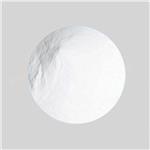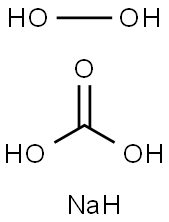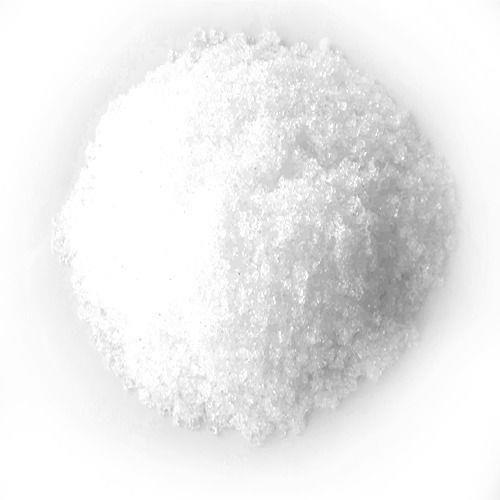Application of sodium peroxycarbonate
Background
Sodium percarbonate (CAS No15630-89-4) molecular formula is 2NaCO3 ·3H2O, molecular weight is 314.02, English name SodiumPercarbonate, referred to as SPC, commonly known as solid hydrogen peroxide, also known as sodium peroxycarbonate, solid hydrogen peroxide, hydrogen peroxide and carbonic acid The addition compound of sodium produces oxygen, water and sodium carbonate after decomposition. Sodium percarbonate not only has the function of liquid hydrogen peroxide, it quickly decomposes and releases oxygen at lower water temperature, and realizes the functions of bleaching, decontamination, sterilization and removal of ignorance; at the same time, the sodium carbonate generated by decomposition can increase the pH value of the water. Reduce the calcium and magnesium ions in hard water, soften the water, and with the increase of pH value, more negative charges will be generated between dirt and fiber, so that the repellency between dirt and fiber will improve the bleaching and washing effect.

As a representative of high-efficiency oxygen-based bleaching agent, sodium percarbonate has been widely used in washing (washing powder and color bleaching powder, etc.), printing and dyeing, textile, papermaking, medicine and hygiene, household and household products with its excellent bleaching activity and bactericidal properties. Personal care product formulations and other fields. Sodium percarbonate has shown excellent application effects and wide application prospects in the fields of washing (washing powder and color bleaching powder, etc.), printing and dyeing, textile, papermaking, medicine and hygiene, household and personal care product formulations. At present, the main factors restricting the application of sodium percarbonate are: the use cost and the stability of some products cannot meet the requirements of the application. However, with the improvement of people's requirements for oxygen bleaching and environmental protection, as well as the improvement of sodium percarbonate production technology, in the near future, sodium percarbonate will have a wider application prospect and a more economical use cost.
Application
1. The application of sodium percarbonate in detergents (washing powder, color bleaching powder, etc.)
The dirt on the fabric can be divided into water-soluble dirt, grease dirt, color (dye) dirt, oily, protein and starch and other dirt. The detergent composed of surfactants and general additives can basically remove oily, protein and starch. Wait for the dirt to be removed. It is necessary to add bleaching agent to remove pigmented dirt, especially yellowing caused by residual dirt is the most difficult problem. For this reason, Europe and the United States have used sodium perborate bleach as a component of detergents since the 1960s. However, because the harm of boron has become more and more well-known, and Europe and some other countries have successively promulgated boron restriction bans, as a new environmentally friendly bleaching agent, sodium percarbonate has completely replaced sodium perborate in detergents.
At present, sodium peroxycarbonate is added to the super concentrated washing powders in the European and American markets, and sodium peroxycarbonate is also added to many conventional washing powders. Sodium percarbonate bleach is included in typical Latin American and European detergent formulations. Consumers have increasingly diversified demands for the efficacy of detergent products, products developed in the market have more and more powerful functions, and society’s awareness of environmental protection has gradually increased. The application of sodium in domestic high-end detergents is expected to be greatly improved: At present, there are many high-end brand detergents in China that have added sodium percarbonate.
In order to better improve the effect of sodium peroxycarbonate in detergents, tetraacetyl ethylene diamine (bleach activator) has also been successfully added to washing powder and other cleaning and sanitation products. The addition amount in Europe and the United States is ordinary laundry Powder (TAED, 0.5%~3%); Concentrated washing powder (TAED, 3%~8%); Color bleaching powder (TAED, 8%~20%); Dishwashing agent (TAED, 4%~5%). This greatly improves the low-temperature cleaning ability of the detergent, and at the same time further enhances the bleaching ability of sodium percarbonate. The products of Church&Dwight, a chemical raw material and chemical product manufacturer established in 1928, are typical successful examples.
The main active ingredient of its product OxiClean is sodium percarbonate, which is considered to be a household cleaning agent and clothing detergent with strong decontamination f! On the basis of more than 50,000 consumer surveys, OxiClean products were rated as the best sanitation and cleaning products in the 2010 Best New Product Award by the most famous American home magazine (<Better Homes&Gardens>).
2. Application of sodium peroxycarbonate in dental care products
Sodium percarbonate is a high-quality active ingredient for tooth color retention. After 18 months of clinical studies, it was confirmed that there was no significant difference between the whitening effect of Crest's night-effect products containing 19% sodium percarbonate and the whitening effect of Crest's whitening tooth paste containing 6% hydrogen peroxide. Long-term follow-up studies have also shown that Crest's night-question effect products will not cause obvious side effects. When evaluating these two products of Crest, "Bei Caifu" magazine pointed out that Crest Whitening Teeth Patch and Crest Night Effect once set a retail sales of 300 million US dollars and a 70% market share.
At the same time, sodium percarbonate also has great application potential in the bleaching of discolored and non-medullary teeth. After the tooth has no pulp, the tooth body becomes dark gray or brown, dull and not beautiful. Laboratory research results of the Federal University of Pelotas have confirmed that sodium percarbonate plays a role in the bleaching of discolored non-medullary teeth, and its cytotoxicity and genetic toxicity are equivalent to those of common discolored non-medullary teeth such as hydrogen peroxide and carbamide peroxide.
3. Applications in other fields
1) Application as a sterilization and disinfection product
Sodium percarbonate can be used to kill common bacteria such as Escherichia coli, Staphylococcus and hepatitis virus, so it can be used as a disinfectant in hospitals and public places, as a disinfectant for tableware and fruits, and as a disinfectant for soap. Solvay's sodium percarbonate product OXYPER. This is an example. At the same time, sodium percarbonate can be compounded with tetraacetyl ethylene diamine to form solid peracetic acid. Compared with traditional liquid peracetic acid, sodium percarbonate and tetra acetyl ethylene diamine compound solid peracetic acid can be transported, stored and used. The characteristics of safety, convenience and strong bactericidal effect have been widely used during the SARS period.
2) Application of sodium percarbonate in chemical process
Sodium percarbonate can be used as an oxidant in reactions such as the conversion of aldehyde groups to phenolic hydroxyl groups, organoborane oxidation, nitrile hydrolysis, thioether and amine oxidation, olefin epoxidation, ketone oxidation and only one-diketone cleavage oxidation. In addition, sodium percarbonate can also be used as a metal surface treatment agent, electroplating detergent and polymer polymerization control agent. Sodium percarbonate has been widely used at home and abroad to replace hydrogen peroxide to complete related organic oxidation reactions. The biggest advantage of sodium percarbonate is that the reaction is mild and easy to be controlled in an organic system. Compared with hydrogen peroxide, the safety of the reaction process is greatly improved. At the same time, in some special oxidation processes, sodium peroxycarbonate has some unique properties compared with other oxidants: very little water content.
3) Application of sodium percarbonate in paper industry
Foreign studies have proved that sodium percarbonate is an effective bleaching agent in pulp processing. From some indicators, the treatment of sodium percarbonate is better than that of hydrogen peroxide. In 2005, researchers from the University of Quebec in Canada demonstrated this at the 59th APPITA Annual Conference and Exhibition. Technologists from the Canadian Paper Research Institute tested the efficiency and environmental impact of bleaching softwood and hardwood mechanical pulp with sodium percarbonate. The results show that when the amount of sodium percarbonate is 15.4% (equivalent to 5.0% hydrogen peroxide), the whiteness of the pulp obtained by bleaching softwood thermomechanical pulp (TMP) or broadwood chemical thermomechanical pulp (CTMP) increases by 15 % ~16%. For softwood thermomechanical pulp, the bleaching efficiency of sodium percarbonate is the same as hydrogen peroxide bleaching efficiency; for hardwood thermomechanical pulp, sodium percarbonate has a slightly better bleaching efficiency than hydrogen peroxide. From the above data, sodium percarbonate is a good bleaching agent, suitable for bleaching mechanical pulp TMP and CTMP.
4) Application of sodium peroxycarbonate in first aid or tissue engineering
Sodium percarbonate is a high-quality source of oxygen for emergency use. Mix sodium percarbonate with solids containing polyvinyl acid and any compound catalyst such as cu, Fe, co, and Mn. When oxygen is used for emergency use, add proper amount of water to decompose oxygen, which is simple and convenient. Big. This kind of oxygen source is suitable for first aid occasions such as family (especially rural family), military, underground construction, mining, flood fighting, fire fighting and disaster relief, etc. It is a kind of first aid oxygen supply agent with excellent performance.
As an oxygen supply agent, sodium percarbonate may promote the advancement of medical tissue engineering technology. In tissue engineering, the improvement of tissue vitality is a medical problem. A study by Wake Forest University in the United States has confirmed that adding oxygen generators (sodium percarbonate) to tissue engineering materials (PLGA) can improve tissue vitality. In the experiment, the duration of the production of reactive oxygen species was up to 24 h, and both tissue necrosis and cell apoptosis were reduced.
5) Application of sodium percarbonate in water quality and soil treatment
As a solid Fenton reagent, sodium percarbonate has great potential in industrial wastewater treatment and removal of persistent organic pollutants (POPs) from soil. Fenton's reagent is a wastewater treatment method that uses ferrous ion (Fe2+) as a catalyst and uses hydrogen peroxide (H: 02) for chemical oxidation. A system composed of ferrous ions and hydrogen peroxide, also known as Fenton's reagent, can generate strong oxidizing hydroxyl radicals, which can destroy the structure of difficult-to-degrade organics in aqueous solution, and finally oxidize and decompose.
Fenton oxidation method can effectively treat wastewater containing organics such as nitrobenzene and ABS, as well as decolor and deodorize wastewater. Sodium percarbonate products have been applied to soil remediation abroad, and its mechanism of action includes: 1) oxidation; 2) promoting bioremediation. This product enhances the biodegradation of aerobic bacteria by providing oxygen into the foundation.
In addition, in fish farming, sodium percarbonate is an effective oxygenator and fungicide. There are also applications in horticulture. For example, the U.S. Environmental Protection Agency (uSEnvironmental Protection Agency, referred to as EPA, or USEPA, or U.S. Environmental Protection Agency, or U.S. Environmental Protection Agency) pointed out in its "Biopesticides Registration Action Document" (PC Code 128860), The end products of sodium percarbonate can be used in greenhouses, storage rooms, nurseries, soil surfaces of long green plants and lawns. In addition, sodium percarbonate products have also been used for rapid treatment of non-chlorinated swimming pool water.
);You may like
Related articles And Qustion
See also
Lastest Price from Sodium percarbonate manufacturers

US $1200.00-800.00/TON2023-12-25
- CAS:
- 15630-89-4
- Min. Order:
- 1TON
- Purity:
- 99%
- Supply Ability:
- 1000000

US $48.00-40.00/KG2023-05-04
- CAS:
- 15630-89-4
- Min. Order:
- 1KG
- Purity:
- 99%
- Supply Ability:
- 20tons



